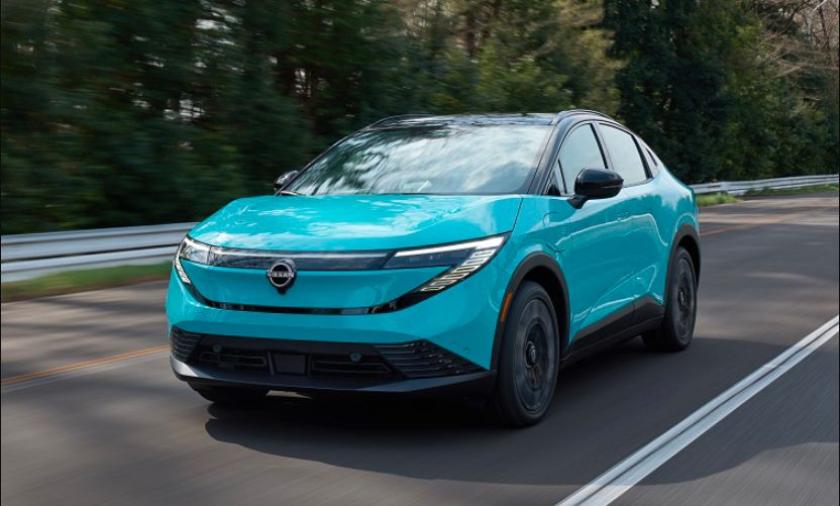Nissan is looking to reclaim its position in the electric vehicle (EV) market with the launch of the third-generation Leaf, a strategic move to revitalize its EV ambitions after falling behind newer competitors despite once leading the charge with the original Leaf in 2010.
The new Leaf, unveiled today, marks a significant evolution from the hatchback format to a crossover SUV, offering up to 25 percent more battery capacity and an estimated range of 303 miles with a 75 kWh battery. The redesigned vehicle will hit the U.S. market in autumn, with other regions to follow. However, the timing could prove challenging.
Headwinds in the U.S. Market
The U.S. launch comes amid several hurdles:
Tariffs on Japan-made vehicles from Nissan’s Tochigi factory may raise prices.
A rollback in EV subsidies and regulations under the Trump administration has dampened demand.
U.S. buyers are increasingly shifting toward hybrids, a segment Nissan currently does not offer domestically.
Analysts warn the new Leaf may struggle to gain traction. “There is a high possibility that this is going on sale at the worst possible time,” said Koji Endo of SBI Securities.
Despite this, Nissan insists the new Leaf will remain competitively priced, even with tariffs, and is banking on its brand recognition and improved specs to draw buyers.
Key Features of the All-New Nissan LEAF (Third Generation)
Nissan has unveiled the third-generation LEAF, reflecting over 15 years of EV experience and nearly 700,000 units sold. Designed to attract both EV enthusiasts and internal combustion engine (ICE) switchers, the new LEAF delivers improved range, faster charging, and an array of lifestyle-enhancing technologies.
Design and Aerodynamics
“Timeless Japanese Futurism” design language with a bold, modern look.
Fastback silhouette, flush door handles, aero-tuned wheels, and flat underbody contribute to a low drag coefficient (0.26 in U.S./Japan; 0.25 in Europe).
New 3D holographic tail lamps and a lightbar-accented V-motion fascia elevate aesthetics.
Distinctive “ni-san” geometric motif reflects Japanese heritage and brand identity.
Interior and Display
Spacious cabin with flat floor enabled by CMF-EV platform.
Floating horizontal dashboard and monolith-style dual screens (12.3” or 14.3”, based on region/grade).
Premium audio system with Bose® Personal® Plus (headrest-integrated speakers).
First-ever Nissan Dimming Panoramic Roof with PDLC tech for heat shielding and comfort.
Performance and Powertrain
All-new 3-in-1 EV powertrain (motor, inverter, reducer), 10 percent smaller and 75 percent less vibration.
Two battery options:
52 kWh: 130 kW, 345 Nm torque.
75 kWh: 160 kW, 355 Nm torque, up to 303 miles range (U.S.).
Fast charging: 10–80 percent in ~35 minutes.
Thermal conditioning system for improved battery efficiency and performance in cold weather.
Charging and Connectivity
NACS (Tesla) connector compatibility in U.S. and Canada.
Intelligent Route Planner with live charging station suggestions.
Select trims feature V2L adapter and 120V outlets for powering devices during outdoor activities.
Advanced Driver Assistance
3D Intelligent Around View Monitor with Invisible Hood and Front Wide Views.
Available Intelligent Distance Control Assist with regenerative braking optimization.
Enhanced navigation-linked thermal management to optimize battery cooling.
Lifestyle & Sustainability Features
Vehicle-to-Load (V2L) support for powering electronics.
Vehicle-to-Home (V2H) capability (Japan): supply energy to homes or use solar energy storage.
Vehicle-to-Grid (V2G) functionality (Europe): return energy to the grid for cost savings and grid stability.
Manufacturing
Production at Tochigi Plant (Japan) and Sunderland Plant (UK).
Symbolic and Strategic Importance
The Leaf is more than just a product — it’s a symbol of Nissan’s early EV leadership, having sold nearly 700,000 units since its debut. Once the world’s best-selling EV, it was eventually eclipsed by Tesla, as Nissan failed to keep pace with rapid advancements in battery and software technology.
Now, under CEO Ivan Espinosa, the company is at a crossroads. Nissan is managing a tough balance between cost-cutting measures — including the planned closure of seven plants and the elimination of 11,000 jobs — and investing in new vehicle development, particularly in electrification. The company also faces mounting pressure from a $4.1 billion debt due next year and reported a $4.5 billion net loss in the previous financial year.
Global EV Strategy
The Leaf’s production will also expand to Sunderland, UK, preserving this key plant as Nissan reshapes its global footprint. However, the original Oppama factory, where the first Leaf was built, is reportedly under review for closure.
This relaunch represents Nissan’s attempt to re-enter the EV race with a competitive product, but success will depend on how well the company adapts to fast-changing consumer preferences, geopolitical trade dynamics, and the rapidly evolving EV policy landscape.
GreentechLead.com News Desk

